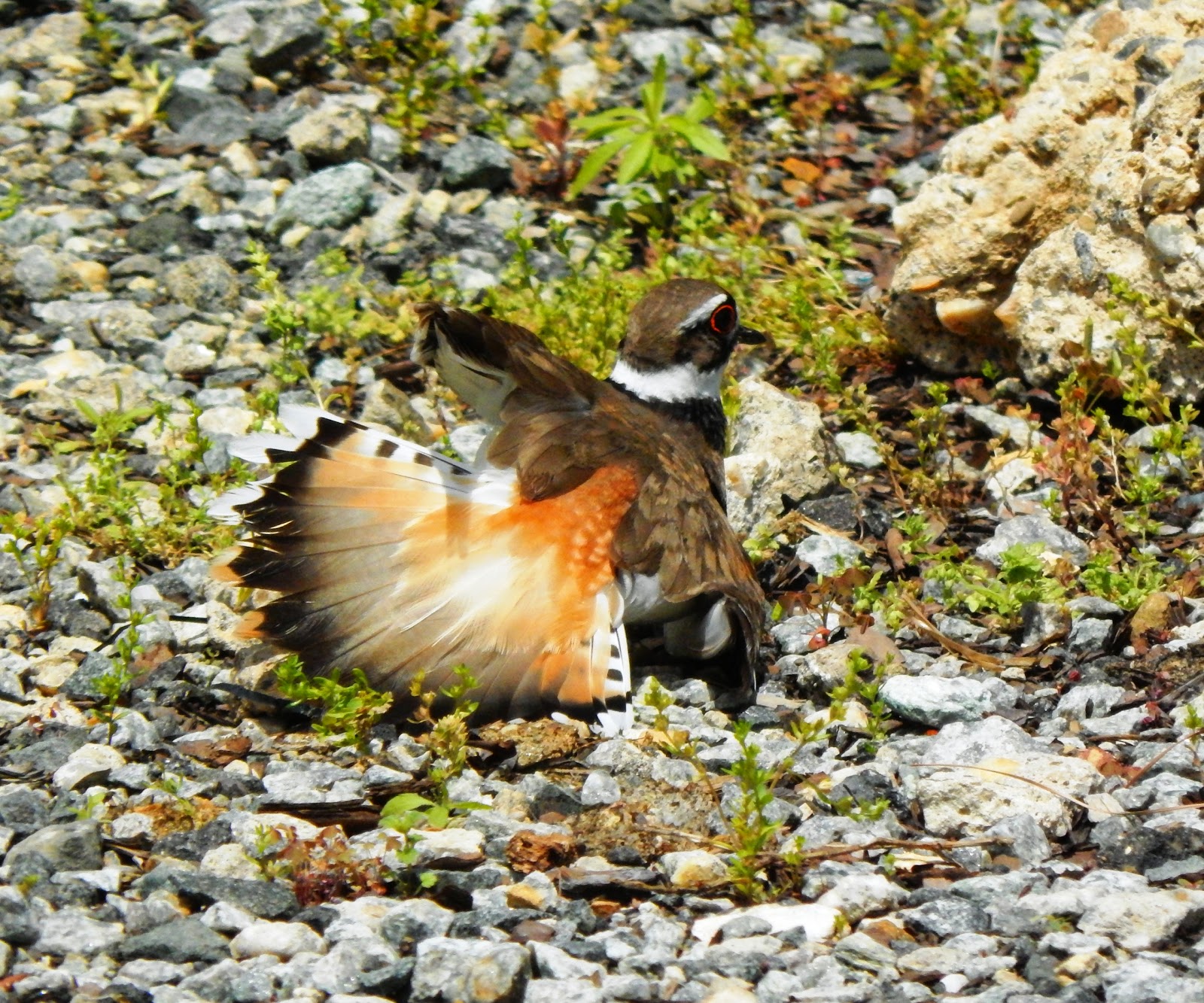 |
| Killdeer |
 |
| Killdeer with "broken wing" |
Today I was called over when staff noticed a bird that appeared injured in our plant nursery. I recognized the bird by its double neck-band and rufous rump as a Killdeer (Charadrius vociferus), a type of plover (shorebird) that frequently nests well away from water and shores. I also recognized what it was trying to do.
Killdeer are well known for their distinctive "kill-deer, kill-deer" call and their broken wing act. This bird was pretending to be injured so as to a lead a potential predator (or human in this case) away from its nest. Since it had chosen a heavily traveled location full of moving equipment, I needed to find its nest and then protect it as soon as possible. That is a task easier said than done since the eggs are extremely well camouflaged.
It took a surprisingly long time to find the eggs, they so well matched the rocky ground, next to a discarded pen no less. Having found them, we marked off the area and did what we could to protect them despite their location. Another interesting aspect that Killdeer eggs display is their pointy shape. This adaptation is common among cliff birds and others who do not build much of a nest. By being pointy, the eggs tend to roll in a tight circle should the parents bump into them or they otherwise are nudged. This keeps them safe and close together. Killdeer eggs are not as extremely pointy on their end as others, but you can still notice the difference.
 |
| Killdeer nest |
 |
| Killdeer eggs |
This made for an very interesting and unexpected discovery in such a well traveled and active work site. Hopefully we have done enough to allow the eggs to hatch in about 3 weeks and have the parents lead the precocial young to a safer location.
No comments:
Post a Comment